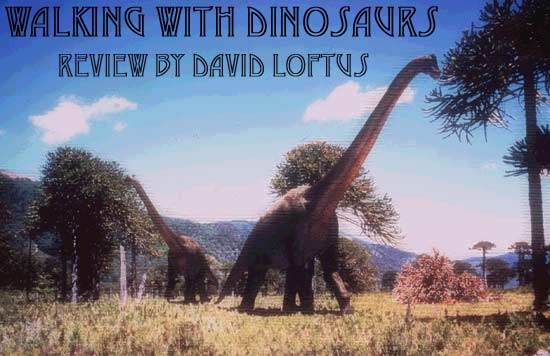|
Part 1: New Blood
Time: 220 million years BCE
Place: "Arizona," on
the Earth’s only continent of Pangaea
Actual Location Shots: New Caledonia
Cynodont, the missing link between
reptiles and mammals, with a rat-like face and a dog-lizard body
that has a little hair, is the poster child of this episode. Besides
being somewhat cute, Cynodont mates for life, lays eggs but suckles
its young, and the males hunt only at night. Best of all, it gets
a pleasant woodwind-and-strings theme on the soundtrack.
The other primary characters of
part 1 are Coelophysis, a light-boned, light green runner that
resembles the raptors so familiar from "Jurassic Park"
or the long-familiar Ornitholestes, who turns up in part 2; and
Postosuchus, the real "heavy" of this episode (in both
senses of the word)—20 feet long, heavy armor on back, massive
jaw with slicing teeth, loud guttural cries and bellows, looks
a little like a huge, skinny, upright crocodile that can rear
up.
Walk-ons include Placerias, a large,
lumbering herbivore headed for quick extinction; Plateosaurus,
a 30-foot forerunner of the giant herbivores like Brontosaurus
and Diplodocus; and Peteinosaurus, an early pterosaur. There’s
an effective animatronic sequence of a Peteinosaurus drinking
at water’s edge with its blunted yellow toucan face, and an animated
sequence of a dragonfly getting nailed by the flying dinosaur,
its wings crunching in Peteinosaurus’s mouth, then falling to
the river surface to float away.
The episode has some bracing scenes.
Pressed by predatory Coelophysis, a Cynodont pair eat their young
and steal off in the night to survive another day. As the water
supply dwindles during a dry summer, "cannibalism is common,"
we are told; and we glimpse animatronic closeups of a Coelophysis
carcass with ripped head and neck, and another small one dangling
from a live reptile’s mouth.
|
|

